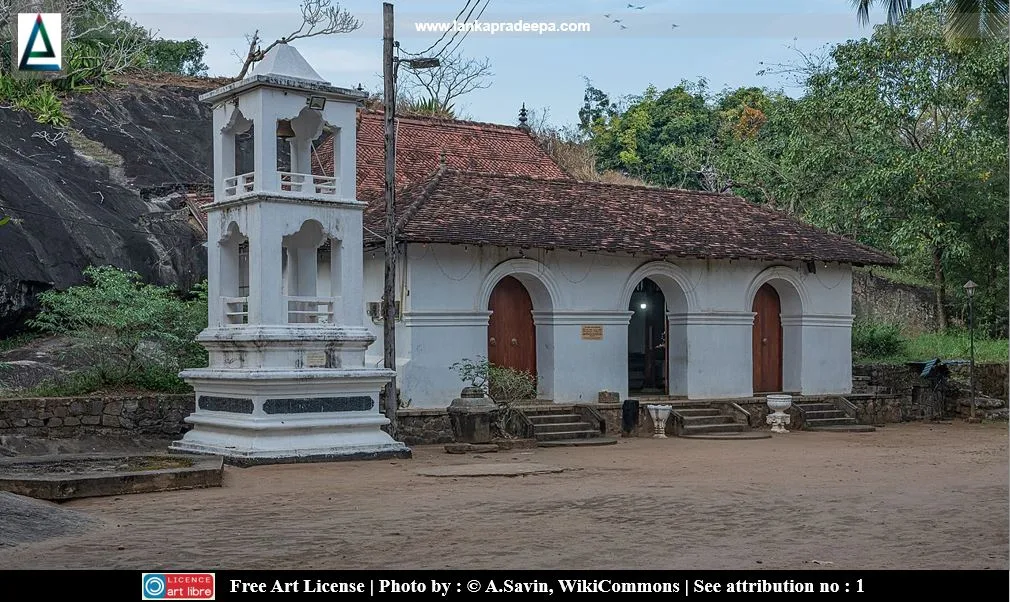
Sri Rajadhi Rajasinha (Sinhala: ශ්රී රාජාධි රාජසිංහ රජ; Tamil: ஸ்ரீ ராஜாதி ராஜசிங்கம்) was the King of Kandyan Kingdom, Sri Lanka from 1781 A.D. to 1798 A.D. Belonging to the Kandy Nayakkar Dynasty, he ruled the country from his capital at Kandy until he was succeeded by Sri Vikrama Rajasinha (De Silva, 2009).
Reign
The king of Kandy
Rajadhi Rajasinha ascended the Kandyan throne at the death of his childless brother Kirti Sri Rajasinha in December 1781 (De Silva, 2009).
From the Dutch to the British occupation
From the Dutch to the British occupation
While the Kandyan Kingdom remained as an independent state, the trade activities of the maritime provinces of the country were under the influence of the Dutch who had occupied those areas from the Portuguese since the 17th century. The arrival of the South Indian-related Nayakkar Dynasty on the Kandyan throne in 1739 was not made the Dutch happy as they were aware of the potential dangers that could come from the English East India Company that had been established in Madras (South India) by the British (De Silva, 2009). In 1762, the English East India Company sent their first diplomatic mission to Sri Lanka and the results made by this mission finally led the Kandyan rulers to develop closer ties with the British than with the Dutch.
King Rajadhi Rajasinhe's relations with the Dutch were consistently unhappy and his hatred of the Dutch was sufficiently intense for him to welcome their removal from Sri Lanka at any cost (De Silva, 2009). Therefore, he put up with British rule in the maritime provinces as it was the only means available to him of eliminating the Dutch (De Silva, 2009). In 1976, the British conquered the Dutch possessions in maritime provinces of Sri Lanka, as a result of some situations developed in Europe (De Silva, 2009).
Death
In August 1798, Rajadhi Rajasinha died of a malignant fever (De Silva, 2009). Like his predecessor, he died childlessly and this made some internal conflicts within the royal family as there was no named successor to the throne (De Silva, 2009). Pilimatalave Maha Adikaram who was the most influential person in court at the time used his power to bring an eighteen years old lad named Kannasami, the son of a sister of one of the queens-dowager, to the throne (De Silva, 2009). However, Muttusami, a brother-in-law of three of the late monarch's queens claimed himself as the successor of Rajadhi Rajasinha but he along with his sister were promptly placed in confinement by Pilimatalave (De Silva, 2009). Kannasami with the help of Pilimatalave, ascended the Kandyan throne by the name Sri Vikrama Rajasinghe (De Silva, 2009).
Services & monuments
Inscriptions
Only one slab inscription has been found in Sri Lanka containing the name of Sri Rajadhi Rajasinha (Ranawella, 2015). However, this inscription has not been engraved in the reign of Rajadhi Rajasinha but in the 19-20th century A.D. (Dias, 1991; Ranawella, 2015).
1) Agrabodhi Viharaya slab inscription (from Matara District)
This inscription reveals some donations made to the temple by Sri Rajadhi Rajasinha and two other chiefs named Seneviratna Korala, and Wijesinghe
Mudali (Dias, 1991; Ranawella, 2015).
Other documents
1) Degaldoruwa Viharaya Sannasa (from Kandy District)This is a royal grant by Sri Rajadhi Rajasinha and it gives in detail the work done to set up the Degaldoruwa temple (Abeywardana, 2004).
2) Lankatilaka Viharaya copper plates (from Kandy District)
A copper plate preserved in Lankatilaka Viharaya records some grants of lands made to the shrine at Lankatilaka in the reigns of Sri Rajadhi Rajasinha and his predecessor King Kirti Sri Rajasinha [(1747-1782 A.D.) Paranavitana, 1960].
3) Sankhapala Viharaya Tudapatha (from Ratnapura District)
A Tudapatha granted to Sankhapala temple by Sri Rajadhi Rajasinha in Saka year 1708 (1786 A.D.) reveals an offering (a land grant) made to a Buddhist monk named Karatota Dhammarama Thera (Abeyawardana, 2002).
4) Rajadhirajasinha Katikavata
A document known as Rajadhirajasinha Katikavata contains the history of the Buddhist Church of Sri Lanka from the time of Vikramabahu (1542 A.D.) of Kandy and its final part dealing with the Rajadhirajasinha and an ecclesiastical code which he had promulgated for Buddhist monks (Mudiyanse, 1973).
Attribution
1) SL Kandy asv2020-01 img49 Degaldoruwa Temple by A.Savin is under the Free Art License 1.3References
1) Abeyawardana, H.A.P., 2002. Heritage of Sabaragamuwa: Major natural,
cultural and historic sites. Sabaragamuwa Development Bank and The
Central Bank of Sri Lanka. ISBN: 955-575-077-7. p.32.
2) Abeywardana, H.A.P., 2004. Heritage of Kandurata: Major natural, cultural and historic sites. Colombo: The Central Bank of Sri Lanka. pp.108-109.
3) De Silva, K.M (Editor in chief), 2009. History of Ceylon: Vol. III. Ministry of Higher Education. pp.6,13-16.
4) Dias, M., 1991. Epigraphical notes (Nos 1 -18). Colombo: Department of Archaeology. pp.33,35-36.
5) Mudiyanse, N., 1973. The Ecclesiastical Code of Rājādhirājasiṁha. Journal of the Sri Lanka Branch of the Royal Asiatic Society, 17, pp.22-27.
6) Paranavitana, S., 1960. Lankatilaka inscriptions. University of Ceylon Review. Vol. XVIII, Nos. 1 & 2. pp.1-45.
7) Ranawella, S., 2015. Archaeological Survey of Ceylon: Inscriptions of Ceylon: Vol. IX. Department of Archaeology. ISBN: 978-955-9159-98-8. pp.63-64.
2) Abeywardana, H.A.P., 2004. Heritage of Kandurata: Major natural, cultural and historic sites. Colombo: The Central Bank of Sri Lanka. pp.108-109.
3) De Silva, K.M (Editor in chief), 2009. History of Ceylon: Vol. III. Ministry of Higher Education. pp.6,13-16.
4) Dias, M., 1991. Epigraphical notes (Nos 1 -18). Colombo: Department of Archaeology. pp.33,35-36.
5) Mudiyanse, N., 1973. The Ecclesiastical Code of Rājādhirājasiṁha. Journal of the Sri Lanka Branch of the Royal Asiatic Society, 17, pp.22-27.
6) Paranavitana, S., 1960. Lankatilaka inscriptions. University of Ceylon Review. Vol. XVIII, Nos. 1 & 2. pp.1-45.
7) Ranawella, S., 2015. Archaeological Survey of Ceylon: Inscriptions of Ceylon: Vol. IX. Department of Archaeology. ISBN: 978-955-9159-98-8. pp.63-64.
This page was last updated on 5 July 2022

